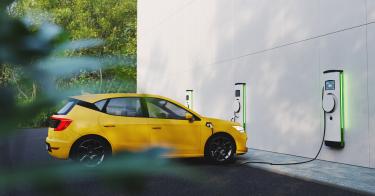Polls show that most Americans prefer gasoline-powered vehicles to electric ones. But the Environmental Protection Agency doesn’t care what they think.
The EPA‘s latest tailpipe emissions rule will force automakers to shift production from gasoline-powered vehicles and hybrids to electric vehicles. It completely disregards consumer preferences, the inherent limitations of EVs, and the nation’s paltry charging infrastructure.
Despite the 2022 West Virginia v. EPA case shutting down the EPA’s assertion that it had limitless authority to regulate carbon emissions from power plants, the agency has decided to make an equal power grab at the auto industry.
The EPA’s unreasonably high standards for tailpipe emissions create an industry-wide emissions target of 85 grams of carbon dioxide per mile. This would be an almost 50% reduction from the standard for model year 2026 vehicles of 168 grams per mile.
The agency also expects the average carbon dioxide emissions target for medium-duty vehicles to fall by 44%, even though the EPA acknowledges that modern vehicles are already 99% cleaner than those manufactured in the 1960s.
>>> Electric Vehicle Enthusiasm Loses Power
Marlo Lewis, senior research fellow at the Competitive Enterprise Institute, calculated that even if Toyota sold only its greenest plug-in Prius, it still couldn’t get halfway to these unreasonably stringent standards.
Even if these emissions standards were enforced, coal and natural gas still make up 60% of the power grid, so electricity for these vehicles is not emissions-free. Carbon-free and strong baseload sources such as hydro and nuclear power account for 25%, and solar and wind account for just under 15%, despite receiving over $36 billion and $18 billion in subsidies from 2016 to 2022, respectively.
In fact, according to a Roland Berger study, electrical utilities would need to invest $370 billion in grid upgrades and $620 billion in new electric vehicles and charging infrastructure to support an electrified medium and heavy trucking industry. This trillion-dollar investment is unfeasible as the Biden administration’s $7.5 billion EV charger program to build 500,000 chargers in five years has built only eight chargers as of last December to serve EVs on interstate highways.
For context, the 2023 ratio of new cars was roughly 84% combustion engine, 8% hybrid, 2% plug-in hybrid and 7% electric. By 2027, the EPA’s moderate forecast under its emission requirements would be 62% combustion engine, 4% hybrid, 10% plug-in hybrid and 24% electric. By 2032, its moderate forecast would force Americans to buy 22% combustion engine, 6% hybrid, 29% plug-in hybrid and 43% electric.
Therefore, the EPA is somehow forecasting that internal combustion engines and hybrid cars, which have almost always outsold EVs, will decline in sales as plug-in hybrids and EVs displace them. But a recent study by the International Council on Clean Transportation using real-world data has shown that fuel consumption by plug-in hybrids is 42% to 67% higher than the EPA label values, so the methodology used to make these assumptions may be flawed.
>>> As Demand for EVs Plummets, Biden’s Green Fantasy Is Pummeling U.S. Auto Dealers
The EPA estimates that the average cost of America’s bestselling SUVs and light trucks will increase by over $8,000 by 2032. The total cost of adopting these strict standards will likely be even greater.
Senate Energy and Natural Resources Committee Chair Joe Manchin III, West Virginia Democrat, and Sen. Mike Crapo, Idaho Republican, have co-sponsored a bill to stop funding for the rule and have been promised a vote by April 19 as part of the $1.2 trillion budget, which funds the federal government through September. While the GOP needs only two Democratic or independent senators to defect to stop funding this rule through the Congressional Review Act, the Biden administration will likely veto any such measure.
This rule will be challenged in court. Plaintiffs will likely argue that the EPA has overstepped its authority and has sought to reshape Americans’ choice of vehicles without congressional approval. Auto dealers have asked the Biden administration not to impose mandates because so many EVs are sitting unsold on their lots.
Emissions-free vehicles are still a fantasy, as electrical power needed for EVs will largely be generated from coal and natural gas, and the U.S. electric grid cannot support EVs in quantities mandated by the EPA. This executive branch overreach should be opposed to protect Americans’ freedom to choose their cars.
This piece originally appeared in The Washington Times


